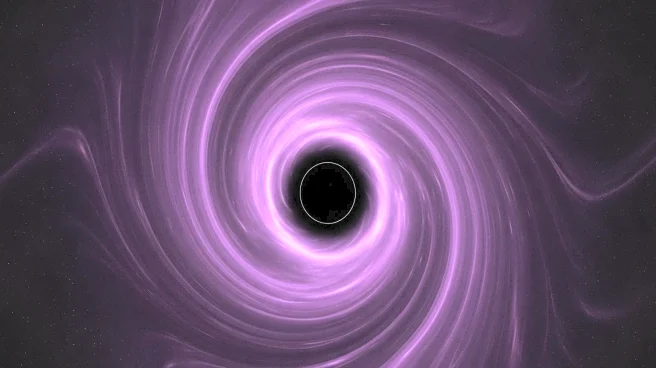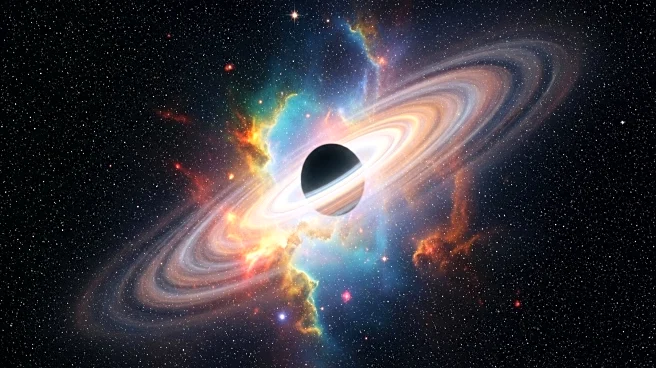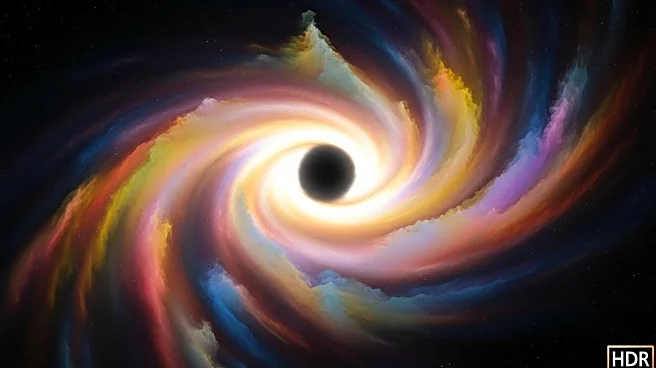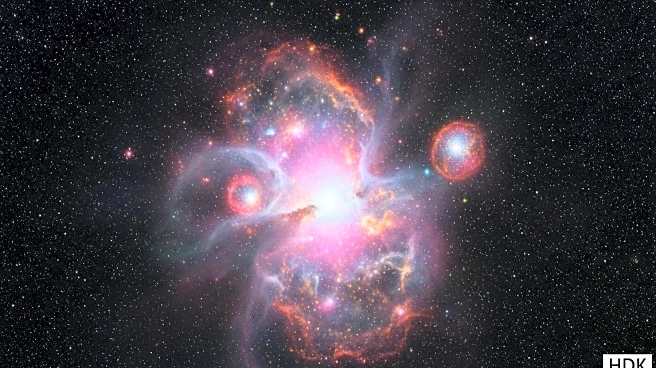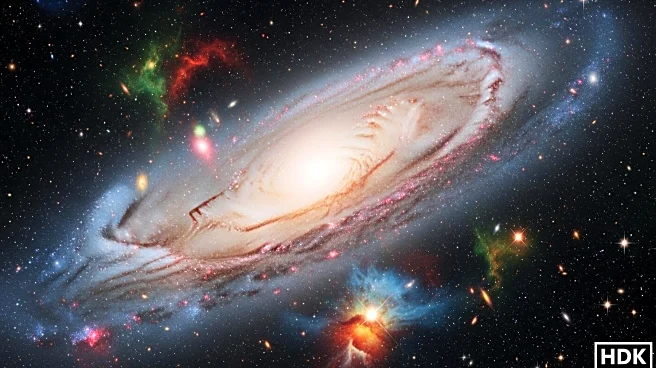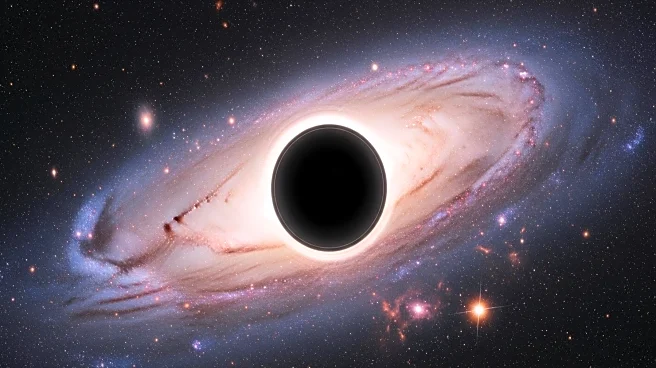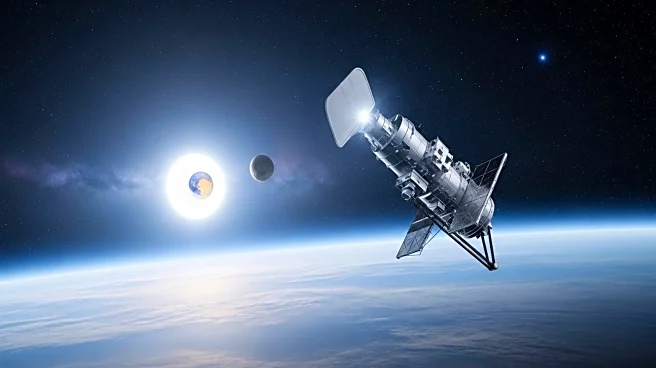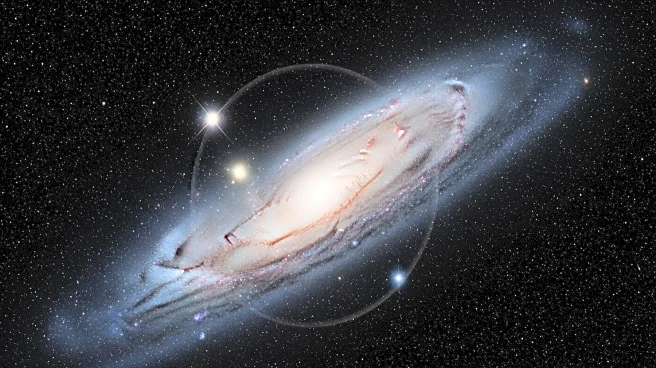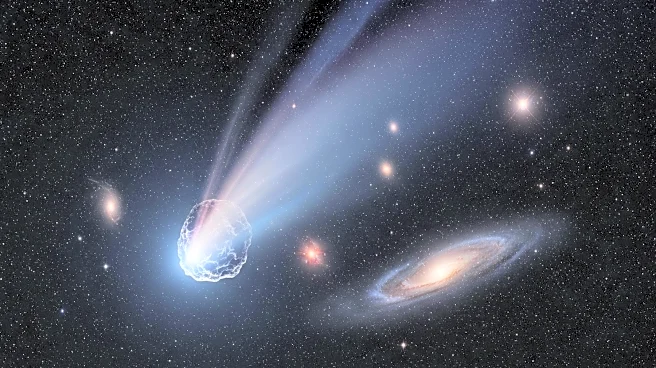What's Happening?
Astronomers have identified a supermassive black hole, RACS J0320-35, expanding at a rate over twice the theoretical limit, challenging existing models of cosmic evolution. Located in the early universe, this black hole is growing at an extraordinary pace, consuming matter at a rate of 300 to 3,000 solar masses per year. The discovery was made using NASA's Chandra X-ray Observatory, which provided data on the black hole's emissions across the electromagnetic spectrum. This rapid growth challenges the Eddington limit, a theoretical ceiling for black hole expansion, suggesting that current understanding of black hole growth may be incomplete.
Why It's Important?
The discovery of RACS J0320-35 has significant implications for theories about black hole formation in the early universe. It suggests that super-Eddington growth may have been more common than previously thought, potentially affecting the formation and evolution of galaxies. Understanding how this black hole can surpass the Eddington limit without destabilizing offers insights into the physics of the early universe, which could revise models of cosmic evolution and illuminate the processes that governed the formation of the first massive cosmic structures.
What's Next?
Further research on RACS J0320-35 and similar objects could reveal new insights into the universe's earliest epochs. Researchers aim to determine whether unique environmental conditions in the early universe facilitated such rapid growth or if unknown physical processes are at play. This inquiry is crucial for developing a comprehensive picture of cosmic history and may lead to the discovery of new physical laws governing the universe.

